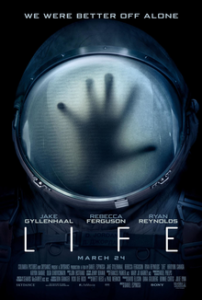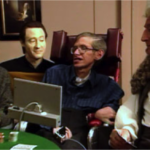The Car-Universe Without A Motor, part 10: Life
In the imagination of many, Darwin’s Origin of the Species points to lifeforms coming into existence without any need for a designer or planner. Yet Darwin’s ideas actually addressed the capacity of life to change and develop after it’s already in existence. Darwin’s concept of evolution in fact does not in any way address life coming from non-life. That’s a separate issue, one usually called abiogenesis. And abiogenesis research shows there’s a massive hill related to the idea that life came from non-life. Or in the way “natural” has been defined by this series, the origin of life is extraordinarily unnatural.
Though perhaps you wouldn’t think so if you read science news headlines. The title of an article from November 6, 2017 exclaims, “Scientists find potential ‘missing link’ in chemistry that led to life on Earth.” A read through the article reveals that prior to this moment, absolutely no progress had been made in explaining how the basic elements of a cell could interact together at the same time and same place: lipids, proteins, and nucleotides (RNA/DNA). Finally, it may be possible, though it requires verification, that a common chemical could allow an important chemical reaction in these three essential building blocks of any type of cell.
An even more breathless title from 2015 proclaims “Chemists claim to have solved riddle of how life began on Earth,” but if you read the article, what you find is that chemists have found some natural processes that given appropriate precursor chemicals and copious ultraviolet light, can assemble the basic building blocks of a cell: lipids, proteins, and nucleotides.
“Wait a minute,” someone might say. “Didn’t science already establish that life can arise from chemicals back in the 1950s?” No, actually, though the experiments of Stanley Miller and Harold Urey did show that amino acids, a building block of the proteins required for life, can be assembled from a randomized process of running current and ultraviolet light through the right set of precursor chemicals. It wasn’t until 2015 that an experiment showed that precursor chemicals for all elements of life can be generated randomly.
“But that’s progress, right?” someone might say. “Science is closing in on the answers, making progress.”
I don’t want to begrudge the chemists their interesting results, but there’s a number of things about these headlines that displease me. First, why was abiogenesis already so commonly accepted as true when there wasn’t even any kind of known mechanism for the assembly of amino acids and lipids and nucleotides? When only building blocks for proteins had been produced by the experiment conducted in 1952?

By the way, this idea that life can emerge from non-life and really should do so has been tremendously influential not just in the search for extraterrestrials (SETI) and other sciences but also in science fiction. Science fiction stories teem with aliens thought to have emerged via abiogenesis and evolved on their own just as life on Earth is thought to have evolved, including the monster creature from the 2017 move, Life (a movie I reviewed on my personal blog). Of course even if abiogenesis isn’t valid, that doesn’t mean alien life can’t exist, because if God created life here, it’s possible to think he created life elsewhere. So we can imagine aliens exist without thinking of abiogenesis and evolution–but the main reason aliens are part of modern thinking about the cosmos is because abiogenesis is commonly assumed to be true in out culture. Even if that doesn’t make sense when you think about how living cells really work.
Maybe I should stop for a second here and say that all life, all of it, has a lipid (or fatty) outer wall in each cell, proteins that provide structure inside the cell, and DNA to provide a memory of how to build the proteins (and RNA to provide the connection between DNA and protein assembly and some other cellular tasks). Viruses have less than that, but a virus hijacks a living cell and forces it to make more of the virus–by itself, without a cell to host it, a virus is not alive.
All three things, lipids, proteins, and nucleotides (DNA/RNA) are required for life, as is the ability to process chemicals for food, commonly carbohydrates. If you can’t bring all three structural things together in the same place at the same time, then a cell is impossible. Kudos to the 2017 discovery of a chemical that reacts in a helpful way with all three cell elements–instead of destroying some elements while working with others, as all previous experiments with these kinds of chemicals revealed.
If science is ever to establish that abiogensis is “natural,” that is, chemicals just doing what chemicals do, the 2015 and 2017 results are important first steps to even beginning to think life could spontaneously leap forth from non-life.
But there’s still some problems that show the spontaneous origin of life if far from likely. Not minor gaps that need to be worked out, but massive, cavernous holes.
One such issue is that amino acids come in two varieties when produced by natural chemical reactions, 50 percent with a version with a chemical group on the left and 50 percent another version with the group on the right. Left and right cannot be mixed in making a protein–all has to be right or all left. It turns out all life uses exclusively left-handed proteins.
Nucleotides also show handedness (a.k.a. chirality). Random processes of generating them produce equal amounts of left and right versions. Yet all life only uses one version, in this case, right-handed nucleotides. Simple probability shows that generating all twenty amino acids used in proteins and all the nucleotides required to code for proteins in the right sequence in the right place quickly becomes astronomically improbable.
For example, a bacterial cell averages around three hundred amino acids per protein. So even if we imagine a process that assembles proteins randomly (no known process for this exists–building blocks of proteins, amino acids, assemble randomly but don’t attach themselves to one another to build whole proteins randomly that I have ever read), if they are being assembled out of 50/50 left/right amino acids, the odds of getting a single protein to self-assemble with only left-handed amino acids are .5 multiplied by itself 300 times. Or about 1 chance in 4909000000000000000000000000000000000000000000000000000000000000000000000000000000000000000. (4.909 10^91). And how many individual proteins does a single simple cell have? About 2 million. Even if we imagine the first cell only had a tenth or a hundredth as many proteins, the complexity of single cell is astoundingly high. And extremely improbable (to put it mildly) as a random event.
RNA is commonly thought to have originated first and then doubled itself to make DNA over time. Yet RNA without the protection of a cell wall or protein is fragile and easy to destroy. So it’s not only true that the problem of assembling an RNA strand is hard because of handedness (like assembling proteins), it isn’t as if they could just keep trying and accumulating themselves until one gets lucky–since chemical processes would also destroy RNA strands as they are forming. The whole thing has to come together as a system at the same time in order to self-propagate.
Scientists in this field are of course looking for ways that chemistry could have come together and made the astronomically improbable more likely. There are numerous hopeful ideas that the first life could have started out a lot simpler than any known life and gradually have become more complex. These ideas don’t really work now, but perhaps they will someday (is the thought of researchers in this field)–and that’s what the 2015 and 2017 results represent, scientists trying to work out chemistry to show how such ideas could possibly function. And they are making a few small steps forward (not that they have already solved everything, as the headlines of science reporting implied). Which is exactly what scientists should be doing, looking for proof that the hypothesis of spontaneous abiogenesis actually was likely. Or if they fail to find such evidence, they ought to admit they are left with a highly, highly improbable chain of events.
So far, they are nowhere close to showing life coming from non-life is anything other than astronomically unlikely. Which the public should know, but somehow mostly does not.
When confronted with such massive improbabilities, one answer given is the same as the one evoked for cosmology. The multiverse + the anthropic principle (check out the third paragraph under “RNA world” in the linked article to see the multiverse used to explain abiogenesis). Given essentially infinite dice rolls, this all could have worked itself out–life could have come from non-life, given enough chances. That’s the thinking.
In the analogy of this series of blog posts, the origin of life from non-life, abiogenesis, represents a massive hill of improbability. We can imagine the “car” of the universe threw itself over the hill somehow without a motor to move it. But it’s much simpler to think of the universe having a designer (that the car has a motor pushing it) who planned the elements of life and put them together. Instead of imagining a universe that wins the cosmic lottery over and over and over and over, just to avoid talking about God.
What are your thoughts on this topic? Please share them below.







































